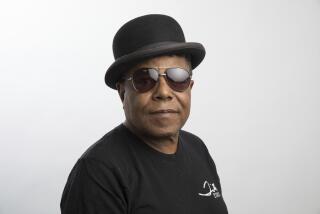Charlie Christian: Guitar starts here
Charlie Christian
“Charlie Christian: The Genius of the Electric Guitar”
Columbia Legacy
****
Charlie Christian’s name is not likely to cause much of a stir among young rock guitarists. But it should, since the pioneering, Texas-born artist produced a body of work -- amazingly, in just two years -- that is the foundation for the entire history of the electric guitar, in jazz and beyond. The succeeding stages in the instrument’s development -- from Les Paul and Chuck Berry to Jimi Hendrix, Eric Clapton, John McLaughlin, Joe Pass, etc. -- seem almost inconceivable without Christian’s establishment of the guitar’s enormous sonic potential beyond its qualities as an acoustic instrument.
A great deal -- but by no means all -- of Christian’s most impressive performances took place during his association with Benny Goodman’s big bands and small groups, from 1939 to 1941. The first comprehensive collection of his Columbia recordings from that period with the Goodman sextet and orchestra (with the addition of a Metronome All-Star effort) has been gathered into a four-CD boxed set.
The first date included is a New York City studio session from Oct. 2, 1939. The interest in Christian was high in the jazz world from the very moment he joined Goodman. And, within a few short months after his first official recording was issued, he won the Down Beat magazine poll as best guitarist.
What seems most astonishing about these early recordings is the fully formed character of Christian’s playing. The electric guitar had surfaced in jazz shortly before his arrival via Eddie Durham and George Barnes. And steel guitar was present in country music through players such as Floyd Smith and the crossover efforts of Leon McAuliffe with the swing-styled Bob Wills & His Texas Playboys.
But Christian seems to have been the first to recognize the real potential of what could be done with sustained string notes. Taking his cue from jazz horn players -- in particular, tenor saxophonist Lester Young -- he developed a free-flowing, briskly swinging style that, with amplification, allowed his long, lean melody lines to integrate freely into the horn-dominated jazz of the Swing Era.
Most of the tracks are dedicated to the familiar repertoire of the sextets, first with vibist Lionel Hampton and Christian alongside Goodman in the front line, later with Hampton replaced by tenor saxophonist Georgie Auld. And, in one especially fascinating group of tunes from 1940, the sextet is expanded and consists of Goodman, Christian, Young, trumpeter Buck Clayton, pianist Count Basie, rhythm guitarist Freddie Green, bassist Walter Page and drummer Jo Jones. The few brief moments in which exchanges take place between Young and Christian have a time-warp quality -- a momentary forecast of the sounds and styles that would flow over the next decades from these two seminal figures.
Equally compelling are the two versions of Christian’s “hit” (it reached the pop charts), “Solo Flight,” an envelope-stretching original featuring his soaring guitar lines as the solo voice with the full Goodman orchestra. And, finally, there is a loosely structured jam session from a studio date in 1941. Here, in a freely spontaneous setting, Christian’s many innovative qualities are on full display: his long, loping lines; his crisp accompaniment chording, delivered on the offbeat in strikingly contemporary fashion; his repetition of the same note on different strings; his dramatic, often dissonant strumming. In effect, a virtual catalog of guitar techniques that would be absorbed by many others.
In early 1941 Christian became one of the regulars who attended the jam sessions at Minton’s in Harlem. Among the other participants in what essentially served as the incubator for the birth of bebop were Thelonious Monk, Kenny Clarke, Don Byas, Joe Guy, etc. Recordings made by engineer Jerry Newman (not included in the Columbia Legacy box) suggest that Christian was moving into a further stage of development -- one that surely would have placed him alongside Dizzy Gillespie, Bud Powell and Charlie Parker as icons of the new jazz. But it wasn’t to be.
In July 1941, stricken with tuberculosis, he was placed in a Staten Island hospital. The following January, while still hospitalized, he was named best guitarist in the Down Beat poll for the third consecutive year. Christian died on March 3, 1942. He was 25 years old.
More to Read
The biggest entertainment stories
Get our big stories about Hollywood, film, television, music, arts, culture and more right in your inbox as soon as they publish.
You may occasionally receive promotional content from the Los Angeles Times.










